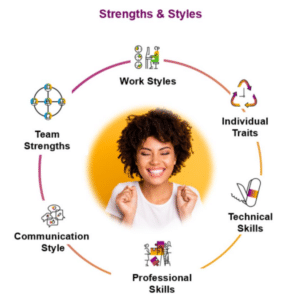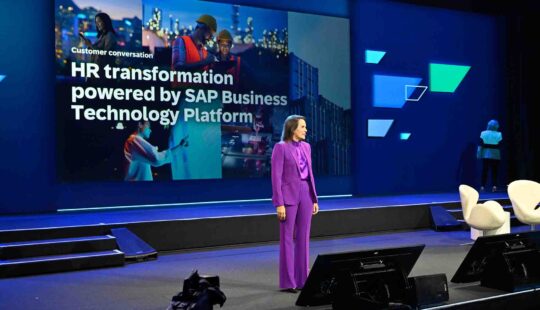You hear it all the time: “It’s in her DNA” or “He’s just wired that way.” Our innate core styles and traits are a critical and often overlooked component of our personal narrative and the formula that makes up who we are. Although they don’t tell our whole story, our traits have a significant influence on our behaviors and tendencies at work. These unique superpowers should be identified, fostered, and leveraged to create more positive and individualized work experiences.
Knowing and understanding our traits is highly valuable both to organizations and to individuals yet remains largely elusive in the workplace. Despite the US$2 billion spent annually on assessments for recruitment and selection, employees typically receive little or no feedback, and their data is left to gather dust for the remainder of their time at the organization.
With human experience management (HXM), the SAP SuccessFactors portfolio is pursuing a shift towards individualization and building on the opportunity of a deeper level of diversity: the diversity of personality. In an earlier article, we described the formula for understanding the whole self, which includes various elements – both traits, like work styles and team strengths, as well as states, like passions and motivations – of the individual. How the whole-self model describes an individual’s traits is referred to as ‘strengths and styles.’ Although traits are somewhat malleable over time – they might change somewhat over the course of five years – they largely define who we are.
Organizations have a great opportunity to better leverage employee’s strengths and styles to create a more positive employee experience. Here’s how.
Step 1: Understanding Me
Most of us have an insatiable curiosity to learn about ourselves. Consider the social media quiz craze. What color is your aura? What city should you live in? Which Hogwarts professor are you? Consider channeling this curiosity at work to make a meaningful impact on your career and day to day experience.
However, today there is a self-awareness gap at work. Ask someone about their communication style and you’ll likely receive a blank stare. This is further supported by psychological research that indicates we are not always the best judges of our own behaviors. This lack of self-awareness can be addressed via well-designed and well-implemented assessments that use data to help us better understand ourselves. Organizations that embrace this strength and style data can help employees build confidence, drive development, and inspire careers.

To better understand ourselves, consider these questions: How do I behave in a team? What strengths do I bring to an organization? What environment am I most likely to thrive in? How do I interact with others at work?
There is no such thing as a “bad” personality. Regardless of what you uncover, it’s all good news. The potential of knowing who we are, releasing preconceived notions of good or bad, and truly understanding our value can help unlock our uniqueness and potential.
Understanding our strengths and styles also plays a critical role in giving us confidence. Self-determination theory tells us that if employees have a strong sense of competency, they are more likely to feel a sense of intrinsic motivation, which leads to increased productivity and efficiency and ultimately better outcomes.
Step 2: Put This Data to Work
Every individual has unbound potential to be tapped, but many struggle to find their ideal place in the world of work. We dream of a future where our uniqueness allows us to be our best, which can include work we love to do that brings fulfillment, meaning, and purpose; work we are good at and an environment fit that helps us perform at our very best; or work that builds our confidence to tackle any challenge.
When organizations create optimal conditions characterized by inclusion, support, and understanding of uniqueness, employees are empowered to be their authentic selves. Doing this opens the gate to a dynamic, thriving workforce.
How can organizations leverage data to find the right person–environment fit? Imagine having individually curated options, selected for each individual, to match their strengths and styles. Our research demonstrates two primary pain points in the workplace today: finding available opportunities to learn what’s possible and assessing the right fit to an individual’s strengths. The degree of fit, match for an opportunity, and even potential gaps can be a black hole for employees today. At SAP, we have developed a new solution, SAP SuccessFactors Opportunity Marketplace, which uses data to help individuals find these individualized opportunities and realize their potential.
The workplace experience is no longer just a hire-to-retire, linear story. Our individuality allows us to create our own paths, learn and grow, and leverage our strengths in the avenues of our choice. A deep understanding of individuals’ strengths and styles helps us curate our own path and select opportunities where we are most likely to succeed and thrive. Putting data to work is brought to life through short-term assignments, formal or experiential learning, peer connections, potential roles, and practicing new skills.
Step 3: Living My Best Self at Work
With a solid understanding of strengths and styles, organizations can create space for us to be our best selves at work. Consider an example of how one might apply strengths and styles to daily work. Let’s use the example of an operations supervisor whose role and team provide a high degree of structure. The operations supervisor learns through her strengths and styles data that she is extremely high in the creativity trait. She feels the urgency to make a creative impact and enrolls in a design thinking skill path, which has been curated for her as a possible interest. After completing the course, she has increased confidence in her strengths and skills and exceeds even her own expectations by taking on the responsibility of leading the operations innovation workstream.
Close the Gaps
New opportunities exist for organizations that can close the gap between organizational need and the strengths and styles of their employees. They can craft their next wave of employee experience around individualization and power their people strategy with unique personal formulas that define who they are.
Learn more about delivering individualized recommendations for employees with SAP SuccessFactors Opportunity Marketplace.
Scott Lietzke is vice president of Product Design at SAP SuccessFactors.
Julie Bartholic is vice president of Product Innovation Design at SAP SuccessFactors.
Caitlynn Sendra is EX product scientist at SAP SuccessFactors.



